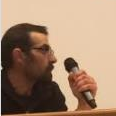Smart Management of Sustainable and Conservation Agriculture
A special issue of Agronomy (ISSN 2073-4395). This special issue belongs to the section "Agroecology Innovation: Achieving System Resilience".
Deadline for manuscript submissions: closed (31 December 2023) | Viewed by 1726
Special Issue Editors
Interests: sustainable management of turfs; non-chemical weed control in urban and suburban areas; use of automatic mowers in turfs and agriculture; precision agriculture; smart strategies and machines for organic and conservation management of agriculture
Special Issues, Collections and Topics in MDPI journals
Interests: farm mechanization and farm machinery; precision agriculture; conservation agriculture; nonchemical weed control
Special Issues, Collections and Topics in MDPI journals
Interests: turfgrass; sustainable turfgrass management; conservation agriculture; sustainable weed control; weed detection; autonomous weed control
Special Issues, Collections and Topics in MDPI journals
Interests: sustainable agricultural systems; agroecology; cover crops; intercropping; agroforestry; conservation agriculture; organic farming
Special Issues, Collections and Topics in MDPI journals
Special Issue Information
Dear Colleagues,
Sustainable Agriculture (SA) allows us to achieve food security, maximizing socio-economic benefits and minimizing environmental drawbacks. Organic Agriculture (OA), Conservation Agriculture (CA), Integrated Agriculture (IA) and Integrated Pest Management (IPM)-based Agriculture can be considered SA applications. In particular, CA is widely acknowledged as a strategy to reduce the risks of erosion and nutrient loss and increase soil organic matter and carbon sink capacity, but generally, it relies on a large use of agrochemicals. Applying CA techniques to system banning (OA) or reducing (IA, IPM) the use of agrochemicals and focusing on agroecosystem health and soil fertility improvement, could be a win–win strategy to build up regenerative systems, able to contribute to food security, environmental health, mitigation of global warming and soil desertification.
Sustainable CA systems leverage modern technologies, necessary to increase the use efficiency of land, water, fuel, fertilizer and pesticides and to enhance provisioning and supporting ecosystem services.
This Special Issue will look at the "Smart Management of Sustainable and Conservation Agriculture".
We invite experts and researchers to contribute with original research, reviews, etc.,
covering all topics, submitting manuscripts related to these innovative systems, i.e., farm mechanization, precision, organic and conservation management and agroecological strategies.
Prof. Dr. Andrea Peruzzi
Prof. Dr. Christian Frasconi
Dr. Mino Sportelli
Prof. Dr. Daniele Antichi
Guest Editors
Manuscript Submission Information
Manuscripts should be submitted online at www.mdpi.com by registering and logging in to this website. Once you are registered, click here to go to the submission form. Manuscripts can be submitted until the deadline. All submissions that pass pre-check are peer-reviewed. Accepted papers will be published continuously in the journal (as soon as accepted) and will be listed together on the special issue website. Research articles, review articles as well as short communications are invited. For planned papers, a title and short abstract (about 100 words) can be sent to the Editorial Office for announcement on this website.
Submitted manuscripts should not have been published previously, nor be under consideration for publication elsewhere (except conference proceedings papers). All manuscripts are thoroughly refereed through a single-blind peer-review process. A guide for authors and other relevant information for submission of manuscripts is available on the Instructions for Authors page. Agronomy is an international peer-reviewed open access monthly journal published by MDPI.
Please visit the Instructions for Authors page before submitting a manuscript. The Article Processing Charge (APC) for publication in this open access journal is 2600 CHF (Swiss Francs). Submitted papers should be well formatted and use good English. Authors may use MDPI's English editing service prior to publication or during author revisions.
Keywords
- sustainable agriculture
- organic agriculture
- conservation agriculture
- precision agriculture
- Integrated pest management (IPM)
- smart agronomical strategies for SA, OA and CA
- smart machines for SA OA and CA
- tillage, planting, crop protection in SA, OA and CA
- crop protection in SA, OA and CA
- weed control in SA, OA and CA
- pest management in SA, OA and CA
- technical and economical drawbacks of SA, OA and CA farming systems








